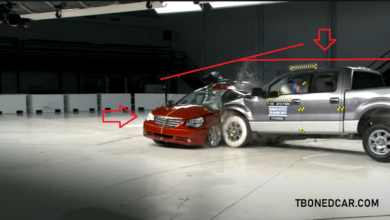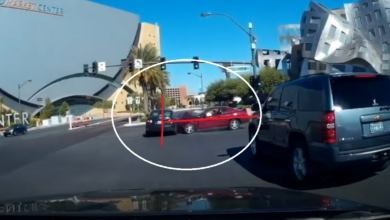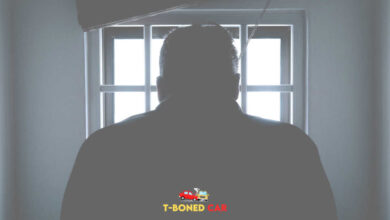T-bone Wreck Meaning
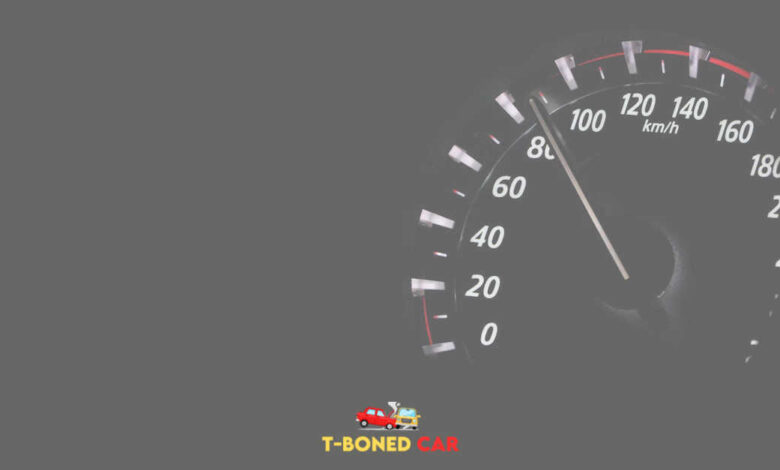
The world of jargon can be confusing, especially when it comes to phrases that have specific meanings in different contexts. One such term that often sparks curiosity is T-bone Wreck Meaning. It typically describes a type of car accident, but it can also have broader implications in various discussions. This term paints a vivid picture of how two entities can collide in unexpected and dramatic ways. Such discussions can range from literal vehicular accidents to metaphorical interpretations in business or personal relationships. Understanding the T-bone Wreck Meaning can offer valuable insights into the complexities and consequences of these collisions, making it a relevant topic for many. So, let’s dive deeper into this intriguing phrase.
Main Points
The term T-bone Wreck Meaning primarily describes a specific type of vehicle collision where one vehicle strikes another at a perpendicular angle. This accident often leads to significant damage and may carry serious implications for those involved. Understanding this term in context helps to grasp not only the immediate consequences but also the deeper educational opportunities it represents. In popular culture, it can symbolize unexpected disruptions in various scenarios, illustrating life’s unpredictability. For beginners, grasping the core concepts around T-bone Wreck Meaning can enhance awareness of safety measures and encourage better decision-making in both driving and metaphorical life choices.
Understanding the Origins of the T-Bone Wreck
The term T-bone Wreck invokes vivid images of car accidents, particularly those involving vehicles crashing into each other at right angles. However, the origins of this phrase extend beyond just automotive lore. The T-bone Wreck Meaning is rooted in the dynamics of collisions. It is often used metaphorically, describing situations where individuals or entities have conflicting interests that lead to disastrous outcomes.
To better understand the context surrounding the T-bone Wreck Meaning in context, consider these key points:
- Accident Dynamics: This refers to how the positioning of vehicles contributes to the severity of the crash, akin to rivalries in various fields.
- Metaphorical Use: The phrase is employed in discussions ranging from business conflicts to personal disputes, highlighting the unexpected impacts of clashes.
- Cultural Relevance: The expression has permeated popular culture, often symbolizing chaos and the unexpected consequences of poorly made decisions.
In summary, the T-bone Wreck transcends its literal interpretation, serving as a cautionary tale in both life and literature. Understanding its origins and applications sheds light on human interaction and the complexities that come with it.

The Anatomy of a T-Bone Collision: What Happens?
A T-bone collision, often described by the term T-bone Wreck Meaning, occurs when one vehicle strikes another at a perpendicular angle. This type of accident can have serious implications for those involved. Typically, the side of a car offers less protection, increasing the likelihood of injuries. The severity of these incidents can vary widely, depending on factors such as speed, size of vehicles, and whether safety features like airbags deploy correctly.
Understanding the Consequences
In popular culture, the T-bone Wreck Meaning and implications can be seen in movies and TV shows, often dramatizing the chaos that ensues. However, the real-life aftermath is frequently devastating. Emergency services often arrive promptly, as they deal with injuries and secure the area. Legal ramifications also follow, as fault must be determined. Drivers need to understand their insurance implications, which can be quite complex.
Final Thoughts
In conclusion, the T-bone Wreck Meaning in popular culture highlights the danger of this collision type. Recognition of its potential risks is crucial for drivers to remain vigilant. Being informed can lead to safer driving practices and ultimately save lives.
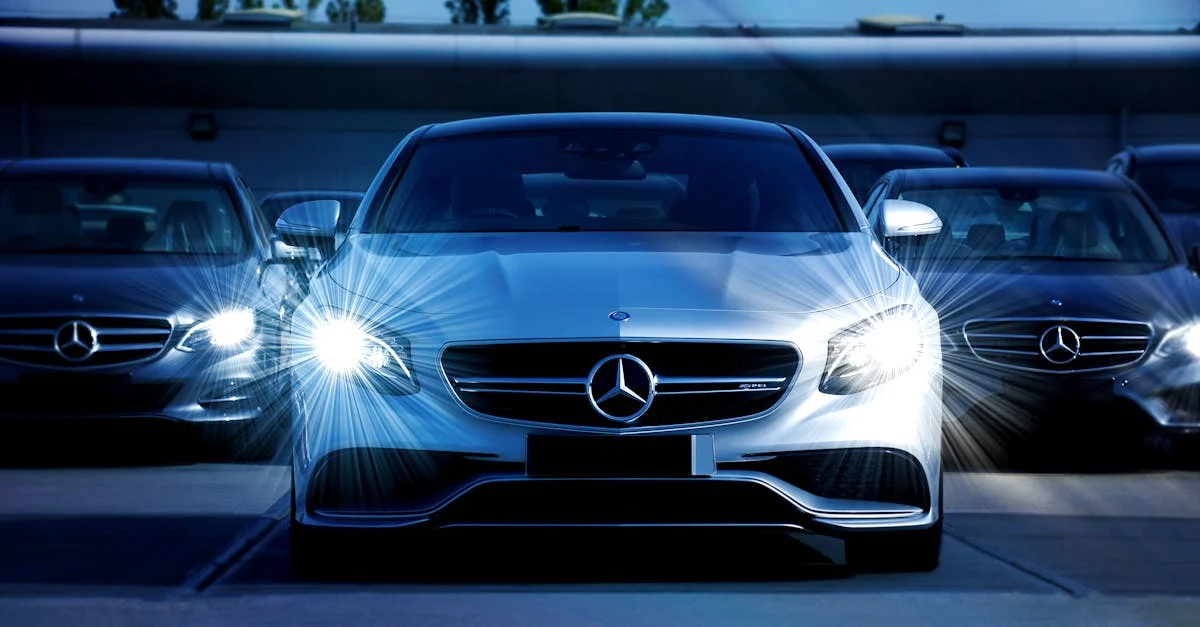
Legal Ramifications of T-Bone Accidents: A Comprehensive Guide
T-bone accidents, often referred to as side-impact collisions, can have significant legal ramifications for those involved. When a vehicle collides perpendicularly with another, the outcome can be devastating. Understanding the implications is crucial. Injuries sustained in a T-bone wreck can lead to extensive medical expenses, and determining fault is often complex. Insurance companies typically investigate to assess liability, which is not always straightforward. Factors such as traffic signals, witness statements, and road conditions play a substantial role in their findings.
Moreover, the T-bone wreck meaning extends beyond the immediate accident. Victims may face long-term repercussions, affecting their daily lives and work. Legal action can be essential to secure compensation. However, navigating the legal system can be daunting. Effective representation is vital to ensure that victims receive the justice they deserve. In conclusion, the aftermath of a T-bone accident is multifaceted, requiring a clear understanding of legal and health implications for those affected.
Understanding Insurance and Liability
The intricacies of T-bone wreck meaning also involve insurance complications. Policy details can influence coverage after such accidents. Both drivers’ policies might come under scrutiny, creating confusion. Engaging a skilled attorney can clarify these nuances, safeguarding your rights and interests.
Prevention Strategies for T-Bone Wrecks: Best Practices for Drivers
Understanding the risks associated with T-bone wreck incidents is essential for every driver. These collisions occur when the front of one vehicle strikes the side of another, usually at intersections. To minimize the likelihood of such accidents, drivers should adopt effective prevention strategies. Here are some best practices to consider:
- Stay Alert: Pay close attention to traffic signals and signs. Distractions can lead to missed warnings.
- Defensive Driving: Always assume other drivers may not see you. Anticipate their moves and be prepared to react accordingly.
- Use Turn Signals: Clearly indicate your intentions to other drivers. This simple action can prevent confusion and enhance safety.
Moreover, it’s critical to understand the T-bone wreck meaning in broader traffic contexts. Evaluating intersections with a critical eye can also aid in accident prevention. For instance, always approach intersections slowly and be ready for any unforeseen circumstances. Recognizing potential hazards ahead can lead to safer outcomes.
Ultimately, practicing these strategies consistently helps create a safer driving environment for everyone. Remember, your vigilance can make a significant difference in preventing devastating T-bone wreck accidents.
The Impact of T-Bone Accidents on Insurance Claims
T-bone accidents, often characterized by a vehicle colliding with the side of another, can lead to significant complications for insurance claims. The T-bone wreck meaning lies not just in its definition but in its aftermath. When these accidents occur, the damage can be extensive, leading to costly repairs and medical expenses. Consequently, claimants often face hurdles when dealing with insurance companies.
Insurance adjusters meticulously evaluate the circumstances surrounding each T-bone wreck meaning. This means they assess factors such as road conditions, visibility, and driver behaviors. However, the subjectivity of such evaluations can create misunderstandings. For instance, drivers may feel unjustly blamed or misrepresented in reports. Furthermore, if fault is disputed, claim processing can become prolonged.
Understanding Coverage and Liability
Policyholders might find themselves grappling with questions about coverage limits and liability in T-bone accidents. Such inquiries highlight the importance of having a clear understanding of one’s insurance policy. In conclusion, awareness of how T-bone accidents impact insurance claims can prepare individuals for the unexpected. This preparation may assist in smooth claim navigation and fair compensation.
Psychological Effects of Being Involved in a T-Bone Wreck
Experiencing a T-bone wreck can leave profound psychological effects on those involved. The aftermath often involves feelings of shock, anxiety, and a sense of helplessness. Many victims find it challenging to cope with the suddenness of the accident. This disorientation can manifest in flashbacks or nightmares, leading to conditions such as PTSD. Moreover, the emotional toll may include depression and an overwhelming fear of driving. As one survivor noted,
“The sound of crashing metal is forever etched in my memory.”
Individuals may also struggle with social interactions. They might feel isolated or misunderstood, as friends and family might not fully grasp the depth of their trauma. In addition, financial stresses due to medical bills from the accident can exacerbate feelings of inadequacy and hopelessness. It’s essential for victims to seek support, whether from professionals or loved ones, to navigate these complex emotions and begin their journey toward healing.
Analyzing Traffic Patterns: Why T-Bone Collisions Occur
T-bone collisions, often referred to as side-impact crashes, happen when one vehicle strikes another at a perpendicular angle. Understanding the factors that contribute to these accidents is essential for improving road safety. Several elements often play a role in the occurrence of these collisions.
- Traffic Signals: Failing to obey traffic signals can lead to devastating T-bone incidents, especially at intersections.
- Visibility Issues: Poor weather, signage, or obstructions can hinder a driver’s ability to see approaching vehicles.
- Distraction: Distracted driving, whether from mobile devices or engaging conversations, significantly increases the risk of a T-bone wreck.
Analyzing these patterns reveals that certain situations are more prone to T-bone collisions. For instance, intersections are common hotspots, as vehicles often approach at high speeds. Additionally, the design of the intersection itself can contribute to the likelihood of such crashes. By focusing on these key factors, it becomes possible to develop effective strategies to mitigate risks associated with T-bone collisions.
Case Studies: Notable T-Bone Wrecks and Their Consequences
T-bone accidents, often termed as side-impact collisions, can lead to severe consequences for all involved. Notable case studies highlight the catastrophic impact of these incidents. For instance, a well-documented case in Los Angeles revealed how a T-bone wreck not only resulted in fatalities but also led to lengthy legal battles. Witness testimonies revealed that the driver who caused the crash ran a red light, demonstrating how crucial it is to obey traffic signals.
Moreover, a study from London showcased a T-bone wreck involving multiple vehicles, resulting in T-bone wreck meaning serious injuries. The aftermath prompted local authorities to reevaluate traffic regulations in the area. These cases remind us that the implications of T-bone accidents extend beyond immediate physical damage; they affect families, communities, and legal systems. It’s evident that enhancing public awareness can potentially reduce these tragic occurrences.
Table of Notable T-Bone Incidents
| Location | Year | Outcome |
|---|---|---|
| Los Angeles | 2018 | Fatalities & Lawsuits |
| London | 2020 | Multiple Injuries |
In summary, understanding the T-bone wreck meaning can foster better driving habits, ultimately saving lives.
The Role of Technology in Reducing T-Bone Accident Risks
In recent years, technology has become a game changer in enhancing road safety, particularly concerning T-bone wreck meaning. One innovative approach involves the integration of advanced sensors in vehicles. These sensors can detect potential collisions from multiple angles, alerting drivers in real-time. This feature is particularly vital at intersections where T-bone accidents frequently occur.
Additionally, automated emergency braking systems play a significant role. These systems autonomously apply the brakes when a collision is imminent, thereby reducing the impact or even avoiding the accident altogether. Another fascinating development is the use of artificial intelligence in traffic management. Smart traffic lights can adapt in real-time, optimizing traffic flow and minimizing the chances of accidents.
Future Prospects
As technology continues to evolve, the potential to drastically reduce T-bone accident risks looks promising. For instance, vehicle-to-vehicle communication is on the horizon. This cutting-edge technology allows cars to communicate with each other, enhancing awareness of surrounding traffic conditions. All these advancements highlight technology’s crucial role in making our roads safer, ultimately leading to fewer T-bone incidents and a greater understanding of the T-bone wreck meaning.
Therefore, embracing these technological innovations can significantly impact driving safety and awareness, ensuring that we are better equipped to prevent accidents in the future.
Related content:
Conclusion
Understanding the T-bone wreck is essential for anyone interested in road safety and accident analysis. These collisions often occur at intersections, where drivers fail to yield or misjudge the approach of another vehicle. The implications of a T-bone accident can be severe, as it can lead to significant injuries and even fatalities. However, by grasping the T-bone wreck meaning, we can better advocate for safer driving practices and enhanced roadway designs. It highlights the importance of vigilance at intersections and encourages drivers to be aware of their surroundings. In conclusion, looking deeper into the T-bone wreck meaning not only informs our understanding but also inspires us to work together toward improved safety measures for everyone on the road.

